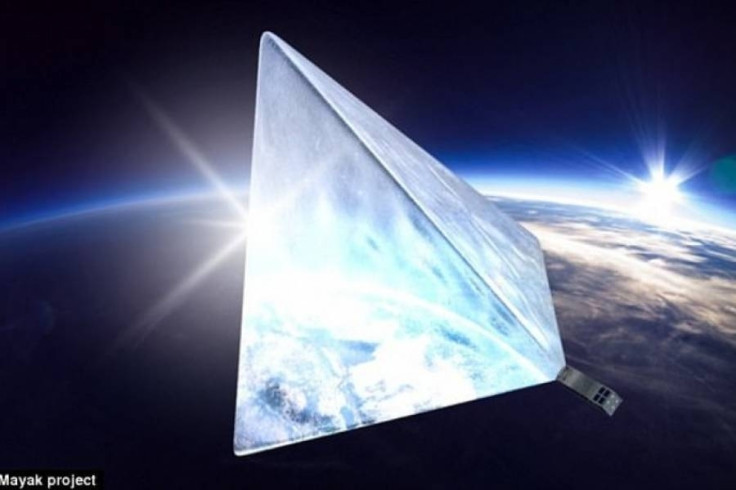Russia launches tiny satellite that will soon become one of the brightest stars in our galaxy
University students have launched the Mayak cubesat using crowdfunding that looks like a tiny bright diamond.

Students from a Russian university have launched a tiny satellite into space without any assistance from the Russian government, and they have deliberately made the satellite very bright, meaning that it might drown out other stars in the sky.
On Friday 14 July, students from Moscow State Mechanical Engineering University successfully launched a cubesat called Mayak into space. It consists of a narrow cuboid shape with a huge pyramid-shaped sail above it made from Mylar.
Cubesats are tiny low-cost miniature satellites that are typically used for space research, although now more and more companies are looking to cubesats to create new businesses in space by offering to monitor various things, because it's a much cheaper way to launch a satellite into space than ever before.
The Mayak satellite is the first ever satellite to be launched in Russia that didn't require any assistance or funding from the authorities. The students raised 3.9 million roubles ($65,833, £50,576) from a campaign on Russian crowdfunding website Boomstarter (1.9 million roubles), plus help from project partner RocketBank.
Mayak was launched on a Soyuz rocket in Kazakhstan together with 72 other satellites. The main aim of the project is to test an aerodynamic braking system for satellites that will enable them to return to Earth without using a rocket engine. The cubesat has also been constructed in such a way as to help reduce space junk – when it receives the command to deorbit, it travels down towards Earth and burns up in the atmosphere upon re-entry.
A super bright satellite
The other aim of the project is to get young people interested in space exploration, by outfitting the cubesat with reflectors that enable scientists to measure the ratio between visibility and distance.
By bouncing off rays of light from the sun, the reflectors have made the cubesat into one of the brightest objects in the sky, and the idea is for people to be able to see it if they turn their heads up to look at the sky, or using a companion mobile app to track the satellite in real time as it circles the Earth 16 times every 24 hours.
However, the problem with making the Mayak cubesat so bright is the fact that it is now outshining everything else in the night sky. Mayak's creators say that the cubesat will shine with a magnitude of -10, which just behind the moon (-12) and the sun (-26.7). Most other satellites orbiting the Earth are faint in the sky, apart from the International Space Station (ISS).
If this is truly the case, then Mayak would be far brighter than many other stars, although the hope is that the Mayak is orbiting just above the day-to-night terminator line, so it will hopefully be too low on the horizon when astronomers are observing the skies.
© Copyright IBTimes 2025. All rights reserved.






















